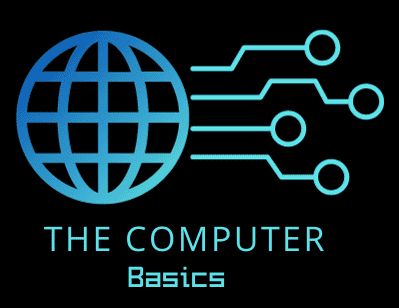Managing your digital footprint is a modern necessity. It’s increasingly crucial in a world where online activities are closely intertwined with our daily lives.
Your digital footprint includes all the traces you leave in the digital environment, from the social media posts you share to the websites you visit. It’s split into two main categories: active and passive.
Your active digital footprint consists of the actions you intentionally take, like statuses you post, comments you make, and profiles you create.
On the other hand, your passive digital footprint is created when your data is collected without your direct input, such as browsing history or location tracking.
Understanding the importance of your digital footprint can help you control your online reputation and protect your privacy.
It’s about knowing that every click, share, and download contributes to your digital identity — an identity that can have real-world impacts. From a benign online search to tagging your location at your favorite cafe, your digital presence is like breadcrumbs leading back to you, painting a detailed picture of who you are.
So, take a moment to consider what your online activities say about you and how they can affect your future.
Whether looking to secure a job, make new connections, or simply keep your personal information private, managing your digital footprint is a step towards ensuring the virtual reflection of yourself is one you’re comfortable with.
Understanding Your Digital Footprint
When you go online, you’re leaving a trail of information. Understanding whether you’re doing so actively or passively and knowing how different platforms and technologies contribute is essential.
Active vs Passive Digital Footprint
Your active digital footprint includes data you intentionally share online, like social media posts, comments, and online profiles. You have direct control over this part of your footprint.
In contrast, your passive digital footprint is data collected without your direct input, like IP addresses and browsing patterns. It’s gathered by websites during your internet sessions and often, you may not even be aware of its collection.
How Social Media Contributes
Social media platforms are a major part of your active footprint. Every tweet, share, or like is a deliberate action that adds to your digital presence. Be mindful that what you share on social media contributes to the public persona you create online.
The Role of Cookies and Browsing History
Cookies are small files a website stores on your device to remember your preferences. Meanwhile, your browsing history reflects the websites you visit, and both contribute to your digital footprint.
They help create a more personalized web experience but also track your online behavior. Learning to manage cookies and browsing history can give you more control over your passive digital footprint.
Protecting Your Online Presence
Taking control of your digital shadow means making sure that your personal information stays just that—personal. Let’s dive into how you can tighten up your online privacy with a few effective strategies.
Adjusting Privacy Settings
Privacy settings are your first line of defense in managing what others can see about you online.
Take time to review and customize your settings on each social platform you use. Remember, the default settings might not always lean in favor of your privacy, so it’s crucial to:
- Review friend lists: Ensure you’re sharing information with people you trust.
- Limit profile visibility: Adjust who can see your posts, photos, and profile details.
- Control tagging: Decide if you want others to be able to tag you in photos or posts and who can see these tags.
Using Strong Passwords and VPNs
To secure your accounts against unauthorized access, strong passwords are a must. They should be long, unique, and include a mix of characters.
Consider these practices:
- Utilize a Password Manager: This tool helps generate and store complex passwords for each of your accounts.
- Two-Factor Authentication (2FA): Always opt-in for an added layer of security beyond just a password.
For your online activities, especially on public Wi-Fi, a Virtual Private Network (VPN) is essential to encrypt your connection. It masks your IP address, keeping your browsing habits and location private. Here’s what you should know:
- Select a reputable VPN provider: Look for one with a strict no-logs policy.
- Use VPNs on public networks: Always turn it on when using public Wi-Fi to protect your personal information from prying eyes.
Managing Your Digital Reputation

Your digital reputation is as critical as your real-world one. It’s the collective impression of all your online activities, especially your social media posts. Monitoring and influencing this reputation can make a huge difference in how you’re perceived.
The Impact of Social Media Posts
When you post on social media, you’re adding to your digital reputation with every like, comment, and share.
Consider your posts as permanent records; future employers, colleagues, and even friends might see them.
To keep your reputation positive, think before you post. Is it respectful, truthful, and something you’d be comfortable with everyone seeing? If not, it’s likely better not posted at all.
Proactively Using Google Alerts
Setting up Google Alerts for your name is like having a personal watchdog for your online reputation.
Whenever your name gets mentioned online, you’ll get a notification. This can help you stay on top of what’s being said about you and address any negative mentions quickly. Remember to use various variations of your name to catch all references.
Minimizing Your Exposure

In today’s digital world, it’s crucial to understand how to shield your personal information from prying eyes. Let’s dive into practical strategies to keep your digital footprint limited.
Limiting Data Shared with Advertisers
Your online activity, especially on social media, is a goldmine for advertisers. By tailoring settings to limit ad tracking, you’re throwing a wrench in their data-gathering machinery. Here’s how:
- Check Privacy Settings: Regularly review your social media platforms’ privacy settings to restrict data access.
- Opt-Out Where Possible: Use opt-out features on websites to stop sharing information with third-party data brokers.
- Use Ad Blockers: Install ad blockers to prevent advertisers from tracking your browsing habits.
Understanding and Managing Permissions
Every app or service you use may ask for various permissions, and it’s your job to keep those permissions in check:
- Review App Permissions: Regularly scrutinize the permissions you’ve granted to apps on your smartphone. If an app doesn’t need access to sensitive information, revoke it.
- Manage Cookies: Clean out your cookies and cache, as these can store bits of personal data.
- Read Terms and Conditions: We know it’s tedious, but understanding what permissions you’re agreeing to is vital to protect your data.
Dealing with the Consequences

When you’re navigating the online world, your digital actions can sometimes lead to unwanted consequences. Whether it’s facing cybercriminals or mitigating the risk of identity theft, you’ve got to be proactive in managing your digital trails.
Navigating the Digital Landscape
You may not always notice it, but cybercriminals are constantly on the lookout for personal information they can exploit. Phishing attacks—where you’re lured into sharing sensitive info—can happen to anyone.
To protect yourself, always verify the sources of the emails and messages you receive. Also, consider using online tools that alert you to potential breaches of your data that might end up on the dark web.
Managing your online security is an ongoing task. Stay updated on the latest in security software, and don’t hesitate to invest in reputable services that provide robust protection against various forms of fraud.
Evaluating and Erasing Digital Traces
Let’s get down to specifics: it’s crucial to regularly evaluate your digital footprint. This means checking what information about you is available online and where it’s stored.
To lessen your digital trail, start by:
- Deactivating old accounts: Limit your exposure by erasing profiles you no longer use.
- Tightening privacy settings: Opt for the highest privacy controls on social media and other online platforms.
Next, consider using services that help you erase unwanted information from the internet. Remember, info you delete might not be gone immediately—it can remain in backups or caches. It’s like trying to remove all evidence of you from a place you’ve visited; it takes a focused effort.
To aid in erasure, you can:
- Use search engines to find where your information is published.
- Contact website administrators to request removal of your data.
- Regularly update your passwords. Also, use multi-factor authentication for an added layer of security.

